How to use these IGCSE Economics tips
These IGCSE Economics tips are collected under various subheadings to help you when you prepare for your examinations.
There are general tips, and specific tips targeted at the specific papers and questions. All IGCSE Economics students will have to take both Paper 1 and Paper 2.
Basic Ke IGCSE Economic Terms
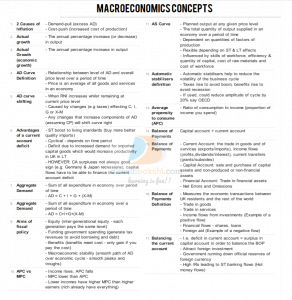
These basic key economic terms are specifically used in Economics, and they will appear in questions. Be aware of the meaning and know the definition of these key concepts. Should you find yourself in doubt about any of the key concepts, approach your teacher or personal tutor for help.
- Learn and know the correct spelling to these economics key terms as the examiners may not award you any marks if they do not understand or recognise the word you used.
- Always check carefully that you have used the right word when you answering a question. Is it Aggregate Demand or Demand? Are you answering the question?
Understanding and knowing the definition of these key concepts and terms are important. You may be asked you to define some of the terms and you have to be able to define the word the way they want it.
How to Ace IGCSE Economics Paper Questions
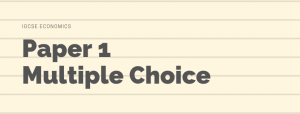
Paper 1 – Multiple Choice Questions
30 multiple choice questions, 45 minutes, 30 marks, 30%
Each question accounts for 1 mark/1% of the overall paper.
- Each question can only test on one thing/ topic/ chapter, therefore it is easier to gather the relevant information and concept of the topic to answer the question.
- Some questions may be harder to interpret without the aid of any illustration, quickly sketch the graph e.g. if they question is asking about AD-AS, then quickly sketch to see which option fits.
- Should you find yourself struggling with one question, skip and get back to it later! Try not to leave blanks or spend too much time on that question.
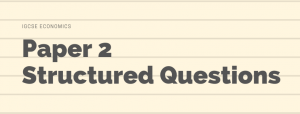
Paper 2 – Structured Question Tips
Compulsory Section A, 3 questions in Section B, 2 hours 15 minutes, 70%
1) The number of marks
The IGCSE Economics Paper 2 is structured questions. You are to answer ONE question in Section A and THREE questions in Section B.
Marks are allocated to each specific questions at the side to give the student a guide as to the amount of detail and length of response is expected.
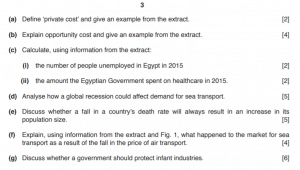
This will help you to better understand what the question is asking for and allowing you to time-manage effectively as you would not spend too much time writing for a question that only gives 1 mark.
For questions that have more marks, an example with definition or explanation is more likely required.
2) Terminology
Be reminded to use specific and appropriate terminology in the Economics paper. There are some words that are specifically used to describe a term in Economics, such as Supply and Demand or GDP, etc. These Economic keywords are the ones that examiners are looking for.
Tip: Do past papers and refer to the model answers to find out these specific keywords and links. The model answers are also great for defining terms.
3) Linking back to the Question
Now that you have all the correct terminology and answering techniques, you need to know how to link all of them up.
For example, if you are required to show how a government uses Fiscal Policy to increase GDP*, you should show the different changes to fiscal policy a government can make, and how they will each lead to an increase in the GDP.
a. Expansionary fiscal policy (Increase Public expenditure, Reduce taxes) → Greater disposable income → More Aggregate Demand (factor of GDP) → More production → Greater GDP.
b. Expansionary fiscal policy (Increase Public expenditure, Reduce taxes) → Expenditure on health, training, etc… → More productivity → More production → Greater GDP.
Note that these two examples of Expansionary Fiscal Policy start and end the same, both lead to a Greater GDP.
c. Include a diagram if the question is 6 or more marks. However, it is always worth adding a diagram or graph to illustrate what you are explaining even if the question weighs lesser than 6 marks provided you are confident of the illustrations.
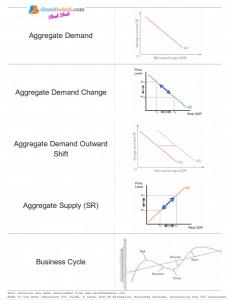
Drawing Graphs for IGCSE Economics Paper 2
What to pay attention to when drawing:
1) Draw neatly and precisely
Whenever you draw graphs for comparison, make sure there is a significant difference in what you are trying to show. Indicate correct and appropriate arrows to show any change e.g. supply or demand shifts.
Always be sure to use a ruler and a clear pen to illustrate your graphs.
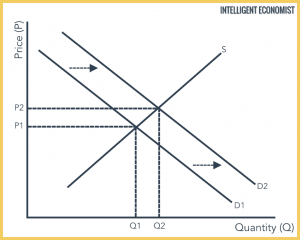
2) Correct Labelling
Remember to always label your axis as well as the title of your graph. Always label the original situation e.g. equilibrium (Pe/Qe) and the new situation e.g. new equilibrium (P1/Q1)
3) Clarity
Make sure your graphs are not cramped together or too small for you to label anything. Make your diagrams clearly visible.
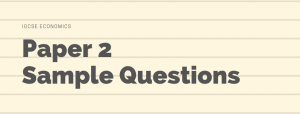
Sample Questions for IGCSE Economics Paper 2
Sample Question 1: Definition Question
Q: Define economies of scale. [2]
A: A fall in average coss (1) resulting from an increase in output/scale of production (1).
If memorising definitions is difficult for you, remember it is Economics. Illustrations can help to bring a point across. For the economies of scale, there is also an illustration that can help.
It is always easier to define when you understand how the graph/illustration works.
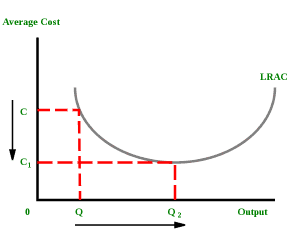
Sample Question 2: Content and Comparison
Q: Analyse how fiscal policy measures could reduce inflation. [6]
A: A rise in taxes (1) causes a fall in disposable income/rise in costs (1) fall in government spending (1) will reduce total (aggregate) demand (1) reduce demand-pull inflation (1).
Government spending on education/training/subsidies (1) lower taxes (1) could reduce costs of production (1) will increase total (aggregate) supply (1) lower cost-push inflation (1).
Lower taxes on imports would reduce cost-push inflation (1).
Take note of the determining factor here, which is Fiscal Policy measures and what the question is asking for is the reduction of inflation.
Sample Question 3: Cause and effect Questions
Q: Explain how market forces would respond to a shortage of drinking water. [4]
A: A shortage means demand exceeds supply (1) price would rise (1) more would be supplied (1) due to the profit motive (1) price signal sent to producers (1) demand would also contract (1). Demand likely to be price inelastic (1) leading to large rise in price (1).
You will have to be aware of the supply and demand curve and shifts; how does one impact the other. You will have to use the concept you have learned for it and apply to questions like this.
Sample Question 4: Discussion Questions
Q: Discuss whether or not raising living standards is the most important economic objective for developing countries. [8]
A:
Why it might be:
Giving people access to basic necessities (1) may take them out of poverty (1). Suggests higher incomes per head (1) allowing people to consume more goods and services (1). Improving healthcare (1) reduce death rates/people more fit for work (1) raise productivity (1) raise output/generate economic growth (1). Improving education (1) may increase skills (1) raise productivity (1) raise output/generate economic growth (1). Better quality housing (1) can reduce illness (1) raise productivity (1) raise output/generate economic growth (1).
Why it might not be:
Raising living standards may cause higher inflation (1) a rising current account deficit (1).
Inflation may be more of a problem (1) costs of inflation (max 2).
Unemployment might be more of a problem (1) costs of unemployment (max 2).
Current account deficit might be more of a problem (1) costs of current account deficit (max 2).
Living standards are an average concept (1) and may be associated with rising inequality (1).
Some measures that could improve living standards such as taxing polluting firms (1) may
reduce economic growth (1) and so may result in lowering living standards (at least in the short
run) (1).
It may be more important to maintain living standards (1) (because) a rising population (1) may
be putting pressure on resources (1).
You will have to provide two different stands for discussion questions; why it might or why it might not. For this question, you will have to understand what comes with rising living standards and how can it benefit developing countries.
Conclusion
Economics is all about linking and indirect impact, besides knowing all the specific terminology of Economics, you have to know how to link all of it up.
Do enough practice to notice a specific pattern as to how these links happen. Cambridge published their Past Papers onto their official website, access this link to get to those past papers.
Tutopiya provides Live Online Tutoring for IGCSE Economics and many other subjects as well. Visit our curriculum page to find out more. Tutopiya also writes guides and resources for other niche subjects as well. Have a read at our IGCSE Biology: Free Comprehensive Notes.
Sign Up for a FREE 60 minutes trial lesson with Tutopiya today! Tutopiya not only has the most qualified and well-trained tutors, but Tutopiya also customises personal lesson plans for all our students here! Tutopiya curates all the lesson plans to fit the student’s learning pace and ability. Why wait? Go to www.tutopiya.com now!

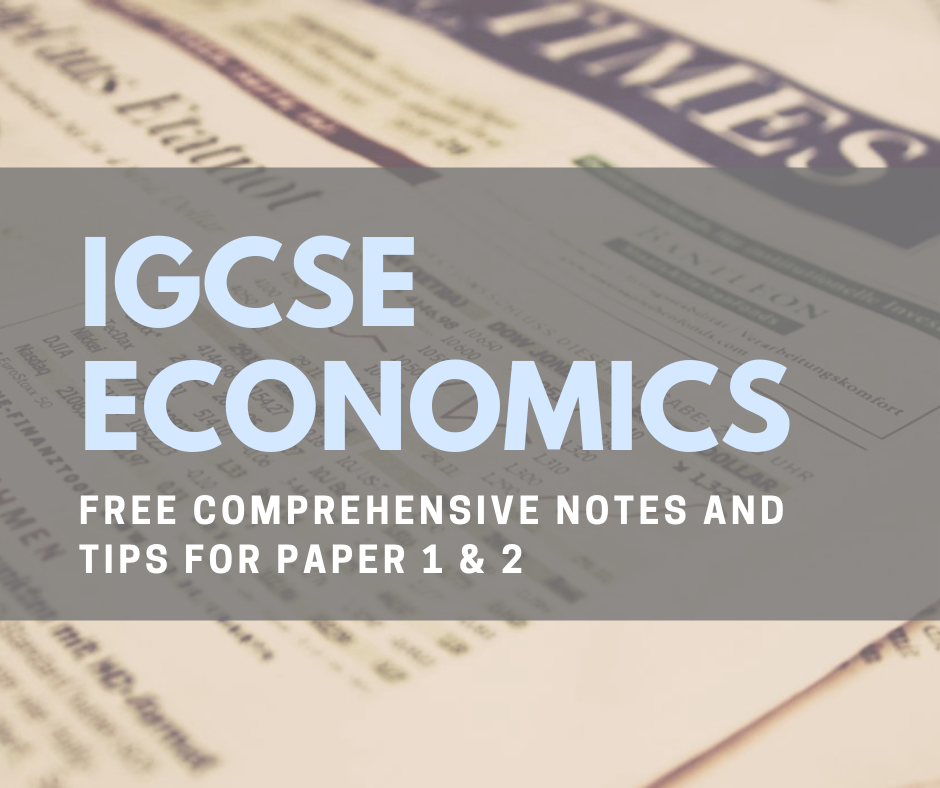
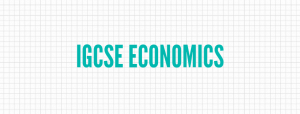
We’re a group of volunteers and opening a new scheme in our
community. Your site provided us with valuable info to
work on. You have done a formidable job and our whole community
will be thankful to you.